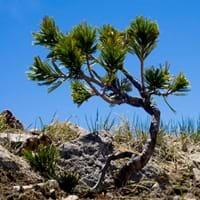Life Span
Perennial
Perennial
Type
Sedge or Rush
Needled or Scaled Evergreen
Origin
Japan
Western United States, Canada
Types
Not Available
Not Available
Habitat
Lawn, shaded fields, Shaded sites
Woodland Garden Canopy
USDA Hardiness Zone
5-10
4-8
Sunset Zone
3a, 3b, 4, 5, 6, 7, 8, 9, 14, 15, 16, 17, 18, 19, 20, 21, 22, 23, 24
Not Available
Habit
Clump-Forming
Oval or Rounded
Flower Color
Tan
Deep Red, Pink, Purple
Flower Color Modifier
Bicolor
Bicolor
Leaf Color in Spring
Dark Green, Gold
Not Available
Leaf Color in Summer
Dark Green, Gold
Not Available
Leaf Color in Fall
Dark Green, Gold
Not Available
Leaf Color in Winter
Dark Green, Gold
Not Available
Leaf Shape
Subulate
Needle like
Plant Season
Spring, Summer, Fall, Winter
Spring, Summer, Fall, Winter
Sunlight
Partial shade, Full Shade
Full Sun
Type of Soil
Clay, Loam, Sand
Loam, Sand
The pH of Soil
Acidic, Neutral
Acidic, Neutral
Soil Drainage
Well drained
Well drained
Bloom Time
Late Spring
Early Spring, Late Spring, Mid Spring
Tolerances
Drought
Drought
Where to Plant?
Ground, Pot
Ground
How to Plant?
Rooted stem cutting, stem tip cuttings
Cuttings, Seedlings
Plant Maintenance
Medium
Medium
Watering Requirements
Needs more water during establishment, Water Deeply, Water in morning to avoid prompting diseases, Water in the early morning hours
Needs watering once a week
In Summer
Lots of watering
Lots of watering
In Spring
Moderate
Moderate
In Winter
Average Water
Average Water
Soil pH
Acidic, Neutral
Acidic, Neutral
Soil Type
Clay, Loam, Sand
Loam, Sand
Soil Drainage Capacity
Well drained
Well drained
Sun Exposure
Partial shade, Full Shade
Full Sun
Pruning
Prune to control growth
Remove damaged leaves, Remove dead branches, Remove dead leaves
Fertilizers
All-Purpose Liquid Fertilizer, Apply N-P-K, Less fertilizing
Fertilzer with low nitrogen content
Pests and Diseases
Disease free, Insects, Red blotch
Mountain pine beetle, White pine blister rust
Plant Tolerance
Drought, Rocky Soil, Shade areas, Variety of soil types, Wet Site
Drought
Flowers
Insignificant
None
Flower Petal Number
Single
Single
Foliage Texture
Fine
Not Available
Foliage Sheen
Glossy
Glossy
Attracts
Aphids, Bugs, Mealybugs, Scale Insects
Nutcrackers
Allergy
Not Available
Hay fever, Rhinitis
Aesthetic Uses
Beautification, Borders, Ground Cover, Landscape Designing
Not Used For Aesthetic Purpose
Beauty Benefits
Not Available
Not Available
Environmental Uses
Air purification
Air purification
Medicinal Uses
Not Available
Antiseptic, Diuretic, Vermifuge
Part of Plant Used
Leaves
Inner Bark, Seeds
Other Uses
Not Available
Used as a thickener in soups, Used for making green dye, Used to flavour soups
Used As Indoor Plant
Yes
No
Used As Outdoor Plant
Yes
Yes
Garden Design
Container, Edging, Groundcover, Mixed Border, Rock Garden / Wall
Screening, Wind Break
Botanical Name
CAREX hachijoensis 'Evergold'
PINUS albicaulis 'Glauca'
Common Name
Carex oshimensis
Carex morrowii
Whitebark Pine, White Pine, Pitch Pine
In Hindi
Japanese Sedge
Whitebark Pine
In German
japanische Segge
Whitebark Pine
In French
Japanese carex
Pin à écorce blanche
In Spanish
juncia japonesa
Whitebark pino
In Greek
japanische Segge
Whitebark Pine
In Portuguese
Sedge japonês
Whitebark Pine
In Polish
japoński turzyca
Whitebark Pine
In Latin
Sedge Italica
Pinus albicaulis
Phylum
Tracheophyta
Coniferophyta
Class
Magnoliopsida
Pinopsida
Family
Cyperaceae
Pinaceae
Clade
Angiosperms, Commelinids, Monocots
Not Available
Tribe
Not Available
Not Available
Subfamily
Not Available
Pinoideae
Number of Species
Not Available
Importance of Japanese Sedge and Whitebark Pine
Want to have the most appropriate plant for your garden? You might want to know the importance of Japanese Sedge and Whitebark Pine. Basically, these two plants vary in many aspects. Compare Japanese Sedge and Whitebark Pine as they differ in many characteristics such as their life, care, benefits, facts, etc. Every gardener must at least have the slightest clue about the plants he wants to plant in his garden. Compare their benefits, which differ in many ways like facts and uses. The medicinal use of Japanese Sedge is Not Available whereas of Whitebark Pine is Antiseptic, Diuretic and Vermifuge. Japanese Sedge has beauty benefits as follows: Not Available while Whitebark Pine has beauty benefits as follows: Not Available.
Compare Facts of Japanese Sedge vs Whitebark Pine
How to choose the best garden plant for your garden depending upon its facts? Here garden plant comparison will help you to solve this query. Compare the facts of Japanese Sedge vs Whitebark Pine and know which one to choose. As garden plants have benefits and other uses, allergy is also a major drawback of plants for some people. Allergic reactions of Japanese Sedge are Not Available whereas of Whitebark Pine have Hay fever and Rhinitis respectively. Having a fruit bearing plant in your garden can be a plus point of your garden. Japanese Sedge has no showy fruits and Whitebark Pine has no showy fruits. Also Japanese Sedge is not flowering and Whitebark Pine is not flowering . You can compare Japanese Sedge and Whitebark Pine facts and facts of other plants too.





